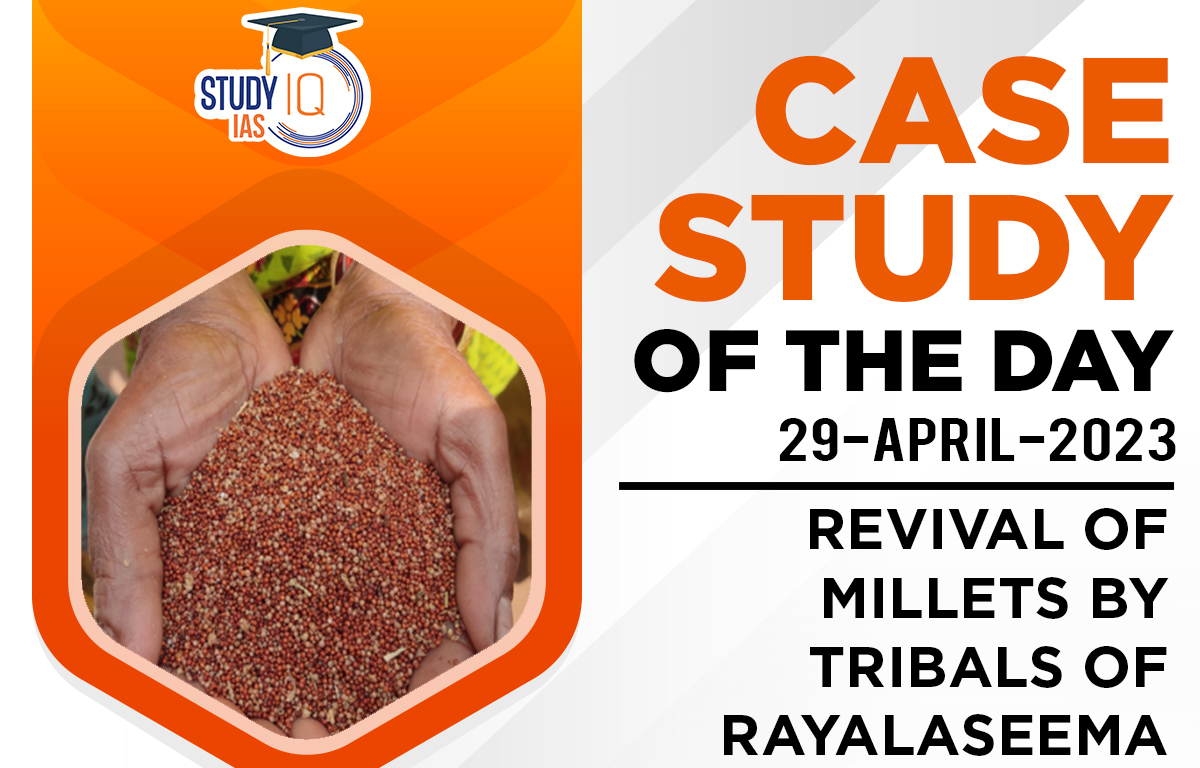Table of Contents
Background: Realizing the importance of millets as a climate-smart and nutrition-rich crop, the government of Andhra Pradesh initiated a comprehensive revival program in the North Coastal areas and parts of Rayalaseema region.
- The program aimed to reintroduce millets as a sustainable and viable option for farming, particularly among tribal communities.
Objectives of the Plan
- Promote millet cultivation: Raise awareness among tribal communities about the nutritional value and ecological benefits of millet and encourage them to adopt millet cultivation as a sustainable farming practice.
- Improve food security and nutrition: Enhance food security and nutritional outcomes by reintroducing millets into the local food systems and diets of tribal communities.
- Empower tribal communities: Strengthen the socio-economic status of tribal communities by providing training, technical support, and market linkages for millet cultivation.
Implementation
- Awareness campaigns and training: Extensive awareness campaigns were conducted to educate tribal communities about the benefits of millet cultivation.
- Training programs were organized to build their capacity in various aspects of millet farming, including land preparation, seed selection, organic farming practices, pest and disease management, and post-harvest techniques.
- Access to quality seeds: To ensure the availability of quality seeds, seed banks were established in collaboration with agricultural research institutions.
- Traditional seed varieties were collected and preserved to promote biodiversity and enable farmers to access diverse millet varieties suited to their specific agro-climatic conditions.
- Technical support and extension services: A team of agricultural extension officers and experts provided continuous technical support and guidance to tribal farmers throughout the cultivation process.
- Regular farm visits, demonstrations, and workshops were conducted to address their queries and challenges.
- Market linkages and value addition: Efforts were made to create direct market linkages for tribal farmers by establishing partnerships with local markets, government procurement agencies, and food processing industries.
- Additionally, training programs on value addition and product diversification were conducted to enable farmers to produce millet-based value-added products like millet flour, biscuits, and snacks.
Results and Impact
- Increased millet cultivation: The comprehensive revival program led to a significant increase in millet cultivation by tribal communities in the target areas.
- Many farmers shifted from mono-cropping to mixed cropping systems, integrating millets into their farming practices.
- Improved food security and nutrition: The reintroduction of millets in local food systems improved the nutritional status of tribal communities.
- Millets, being rich in fiber, protein, and essential micronutrients, contributed to diversified and healthier diets, reducing the prevalence of malnutrition.
- Socio-economic empowerment: Tribal farmers who embraced millet cultivation witnessed improved income opportunities.


 Daily Quiz 01 July 2025
Daily Quiz 01 July 2025
 China, Pakistan and Bangladesh Trilatera...
China, Pakistan and Bangladesh Trilatera...
 US Pulls Funding from GAVI-Global Vaccin...
US Pulls Funding from GAVI-Global Vaccin...





















